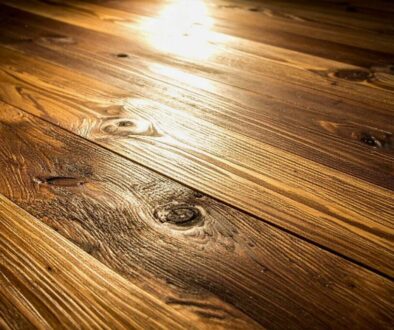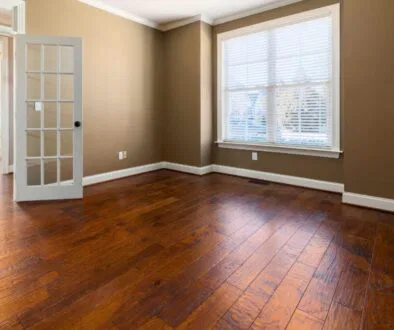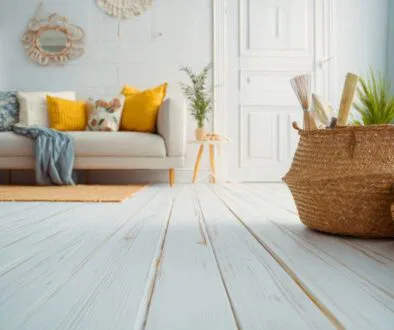How To Choose The Best Wood Filler For Floors
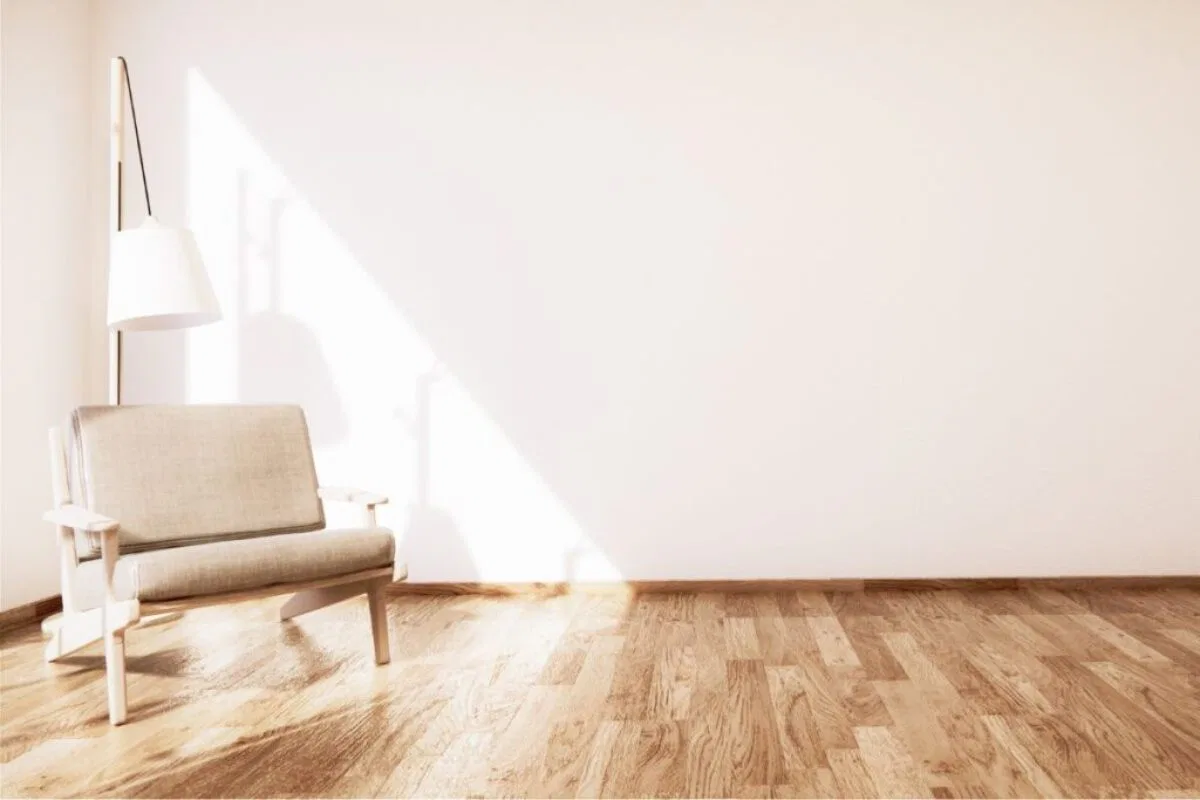
Published January 8, 2024
Filling gaps in hardwood floors may seem like a daunting task. To start, you need to find a suitable wood floor filler. After that, you’ll have to work to fill in the gaps in your hardwood floor.
Luckily, our team here at US Vintage Wood is here to help you. We’ve created this definitive guide about everything you need to know about wood filler for floors. That way, you won’t be left in the dark regarding the subject. When your hardwood floor needs to be filled in, you can take action. So, without further ado, let’s begin!
What Are Wood Fillers For Floors?
As you probably know, wood is a material that contracts and expands due to many factors.
Sometimes, your hardwood flooring can develop cracks and other kinds of damage. You can use a wood filler for hardwood floors to fix this quickly.
As their name implies, wood fillers fill in cracks, holes, and damage caused by wear and tear. Two main kinds of wood fillers are available – putty and wood. Let’s talk about each one below:
-
Putty Filler
Putty fillers are great for repairing cracks, holes, and splits. However, they’re not suitable if you wish to refinish your floor. How come? Because it’s wetter than wood putty.
On the bright side, putty fillers can handle regular foot traffic due to their properties. In addition to that, since it doesn’t fully dry, it holds floor expansion and contraction wonderfully.
-
Wood Filler
The properties of wood filler make it best suited for repairing or refurbishing finished hardwood floors. For those wondering why, a wood filler can be sanded and stained after application.
Now, with that being said, a hardwood floor filler isn’t as flexible as putty filler. As such, you should avoid walking on a newly furbished surface until completely dry to prevent problems.
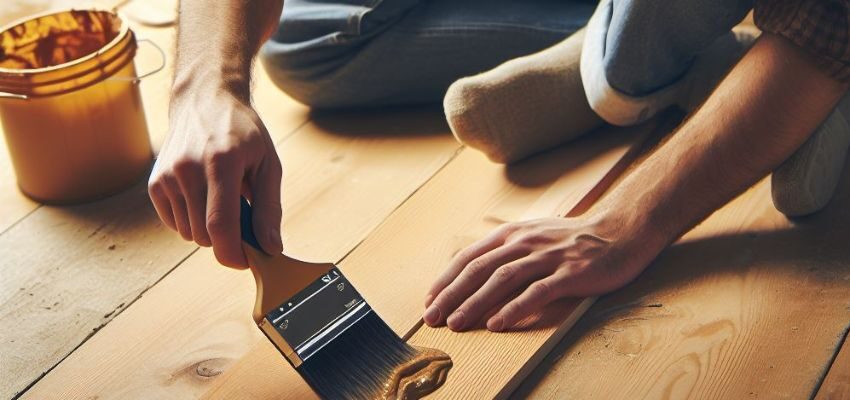
What Are The Different Types Of Wood Fillers?
Wood fillers are used to fix or repair cracks, holes, and imperfections on wooden surfaces. Today, they’re available in various forms, each possessing unique characteristics and uses. Let’s look at the different types of wood fillers and their applications.
1. Latex-Based Wood Filler
Latex-based wood fillers combine wood fibers, calcium carbonate, and latex. They have a creamy consistency and can be conveniently applied with a putty knife or spatula. This type of filler is water-based, making it easy to clean up and non-toxic. It dries quickly, usually within 15-20 minutes, and can be sanded or painted over once fully dry. Latex-based wood fillers are best used for filling small cracks or holes in interior wooden surfaces.
2. Epoxy Wood Filler
Epoxy wood filler is a two-part putty consisting of a resin and hardener. Once mixed, it forms a strong adhesive that can fill larger holes or gaps in wooden surfaces. Epoxy wood filler is waterproof, making it ideal for exterior use. It dries to a hard and durable finish, allowing it to endure heavy use and even sanding or drilling. However, this filler takes longer to dry thoroughly, usually up to 6 hours. Additionally, it may emit strong fumes during the application process.
3. Cellulose-Based Wood Filler
A cellulose-based wood filler comprises wood fibers and a binding agent such as tung or linseed oil. It has a putty-like consistency and can be readily molded by hand or using a putty knife. This filler is ideal for filling large holes or cracks in wooden surfaces. Cellulose-based wood fillers are also water-resistant. This makes them suitable for interior and exterior use.
4. Wax-Based Wood Filler
A wax-based wood filler combines beeswax, mineral spirits, and colorants. It has a soft consistency and can be readily applied using your hands or a putty knife. The filler works best for filling hairline cracks on wood or minor furniture touch-ups. However, it’s not as durable as the other wood fillers and requires frequent applications.
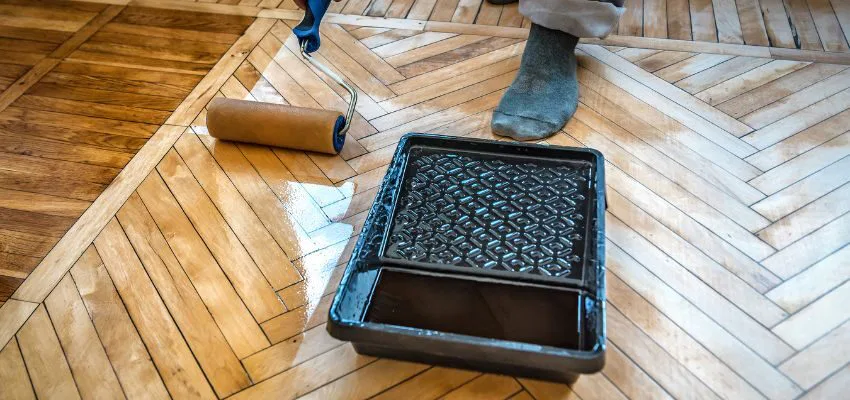
Steps On How To Fill Gaps In Wood Floor
When repairing gaps in your wood floor, you need a suitable wood floor gap filler. Here are the steps to ensure the best results:
- Clean the area. Before starting the process, carefully check and prepare the surface. Remove any dirt, particles, or other debris, ensuring a clean and smooth site. Removal of debris will help you achieve a high-quality and long-lasting finish.
- Choose the suitable filler. Choosing the right wood filler for your flooring is essential. Think of color and texture to find one that blends seamlessly. If staining the floor, use a filler compatible with staining to achieve a smooth, consistent finish.
- Apply the filler. Apply the wood filler to the gaps using a putty knife. Remember to slightly overfill the cracks, as the filler will shrink as it dries.
- Let it dry. Allow the filler to dry thoroughly. The length can vary, ranging from a few hours to overnight. It depends on the specific product and the size of the gap.
- Sand the area. After the filter has dried, sand the site until it becomes level with the floor’s surface. Prevent any damage to the surrounding wood by using fine-grit sandpaper.
- Wipe the area using a tack cloth. Any leftover sanding dust can result in issues during staining or finishing. Utilize a tack cloth to eliminate any lingering dust.
- Finish the floor. After removing the sanding dust, you can finish the floor. In most cases, it involves staining the wood or applying a clear coat for extra protection.
- Maintain the floor. Regularly inspect and maintain your wood floor to prevent future gaps and prolong its lifespan. Fix loose boards or deal with high humidity that can lead to cracks. Even if you use a floor cover like mats, routine checks will help you stay ahead in keeping your floor in good shape.
Where Do You Buy Wood Fillers For Floors?
Any hardware store should offer a decent selection of wood and putty fillers. That said, you can also purchase wood floor filler from online sources. You’ll have to wait for the product to be shipped to your doorstep, which sometimes takes time.
Which Kind Of Wood Floor Filler Is Better?
It wouldn’t be right to say that putty filler is better than wood filler. The reason is that putty fillers are superior at filling gaps in old hardwood floors.
Meanwhile, wood fillers are optimal for quick repairs to newly-finished floors due to their specific properties.
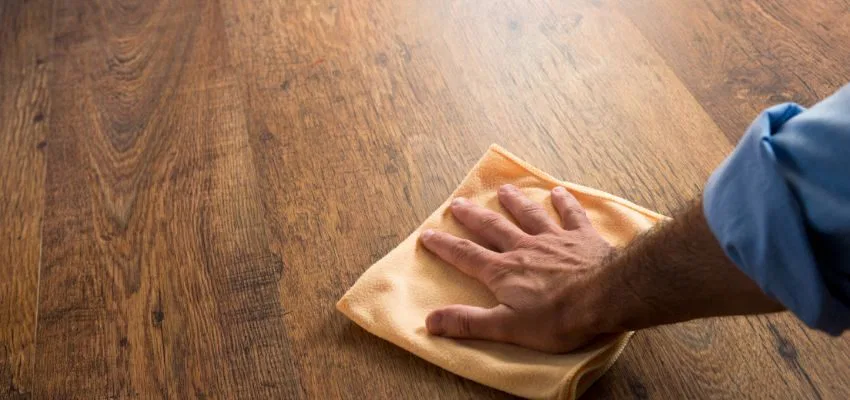
Insightful Solutions for Your Wood Floor Gaps
When in doubt as to what kind of wood filler for floors to use, don’t hesitate to get in touch with our experts as we can help you with anything that’s related to wood. Our team does not only specialize in repairs. We also take on projects where we handle everything from design to construction. We ensure the project is completed at the cheapest price possible.
Hire The Timber Experts For Your Next Project
Vintage & Specialty Wood should be your source of the highest quality timbers from around the world. When it comes to fabricating and installing reclaimed wood or specialty wood products in your home, we don’t cut corners. We offer many reclaimed wood and specialty wood products such as Douglas Fir, white oak, and much more. We also offer timber framing and wood flooring services as well. Contact our team today to speak to a timber expert about what Vintage & Specialty Wood can do for you.

This Blog Is Fact Checked
This content has undergone meticulous fact-checking by our team of internal experts. Gain a deeper understanding of the high editorial standards we uphold on our website here.

About The Author
Experience, exploration, and knowledge are the hallmarks of writer Rei Bayucca. Her dedication to crafting articles that both inspire and educate will leave you thinking long after you’ve finished reading.

